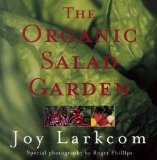

Yacon is a tender perennial, meaning that it lives for many years but needs to be protected from frost. Other tender perennials are potatoes (which, along with Yacon, originates from the high Andes) and Dahlias. Yacon is grown in nearly the same way as Dahlias, and if you've ever grown them before you'll know how easy that is.
They produce a huge rootstock consisting of two types of tubers: the root tubers are fat and succulent, and grow on stalks away from the main stem - it is these that are eaten; the stem tubers are knobbly and cluster around the main stalk - it is these that we supply for you to grow. In subsequent years you can break them off the stored root for growing from yourself, and 8-10 separate tubers can be detached from one to make as many plants.
Start the tubers by potting into 15cm (6") pots, planting them just below the surface. A little gentle warmth helps them into growth if you've got it, but in fact if you're patient they'll emerge without any extra heat in a cold greenhouse or on the windowsill in a cool room when they get a bit of warmth from the sun with lengthening days. It's important not to give extra heat without it being accompanied by high light levels otherwise leggy plants will result which will never be satisactory when planted out. Sometimes the young foliage emerges quite colourless at first, often yellow or white. Why this should be is not clearly understood, but the foliage does green up in time and the plants do not seem to get set back in any way.

Yacon should be planted out when the last frost has passed, by which time the roots will have quite filled the pot. Ensure that they're given a little feed if they become rootbound before you can plant them out, for maximum yield. They grow huge, and lots of space needs to be given between them: 90cms (3 feet) is sufficient to allow the enormous leaves the room they need. They don't fill their space very quickly at first, so it's possible to raise a quick catch crop (lettuce, spinach or radish, for instance) between the plants before they reach full size. The stems are tall and may need staking in a windy site. Their ultimate height depends on how good a summer they experience - up to 2ms (7 feet) is not unknown. There's little in the way of aftercare needed. They do require quite a lot of water for a good yield of tubers, but will tolerate some drought. They do not suffer, as far as we know, from pests and diseases. If you are following a crop rotation, they should be treated as a root crop.
The tubers do not fully develop until well into autumn, and the plants will keep growing quite vigorously until the first frosts. It is when the foliage is killed off by frost that the plants should be dug up and the stems cut off. Lift carefully with a fork (or, in a light soil, by pulling). Care has to be taken not to damage the brittle tubers. Store them in a frost-free shed or garage. When tubers are needed, detach them from the stored rootstock. Remember to use the root tubers for eating only; the stem tubers are left for propagating from. Come late March / early April, detach these stem tubers for growing from and start the process all over again.
The tubers remain quite crunchy even after prolonged cooking, very much like water chestnuts, for which they can be used in Oriental cooking as a substitute. They contain a lot of sugar but (unlike in late stored potatoes, for instance) at a level which is very pleasant - they are used in some parts of the world for alcohol production. Steaming or boiling the tubers for 30 minutes tenderises them nicely without removing their crunchiness, and they easily absorb liquid, be it a sauce, gravy or dressing. They should be peeled beforehand and usually diced: some tubers can grow as big as a pound or over, so they need to be reduced in size a bit to be more manageable.

Join "Garden Notes" and plan for Harvest Success as you track and record your gardening progress. Your Free Personal Garden Journal has pages for jotting down notes on the seeds you start, your new plantings, when you fertilized, and even a graph to plot a new garden.
I didn't want to see another internet "eBook" on growing anything, but my husband signed up for Kacper's free report and I have to tell you, it is WELL worth the read. If you think you know everything about growing tomatoes, I challenge you to read Kacper's report. HIGHLY recommended!

Based entirely on organic gardening principles. This says it all. Joy's book has been fully revised and updated and includes extensive new reading, particularly on oriental and fruiting vegetables, and did I mention, is now entirely based on organic gardening practices. Read More...
